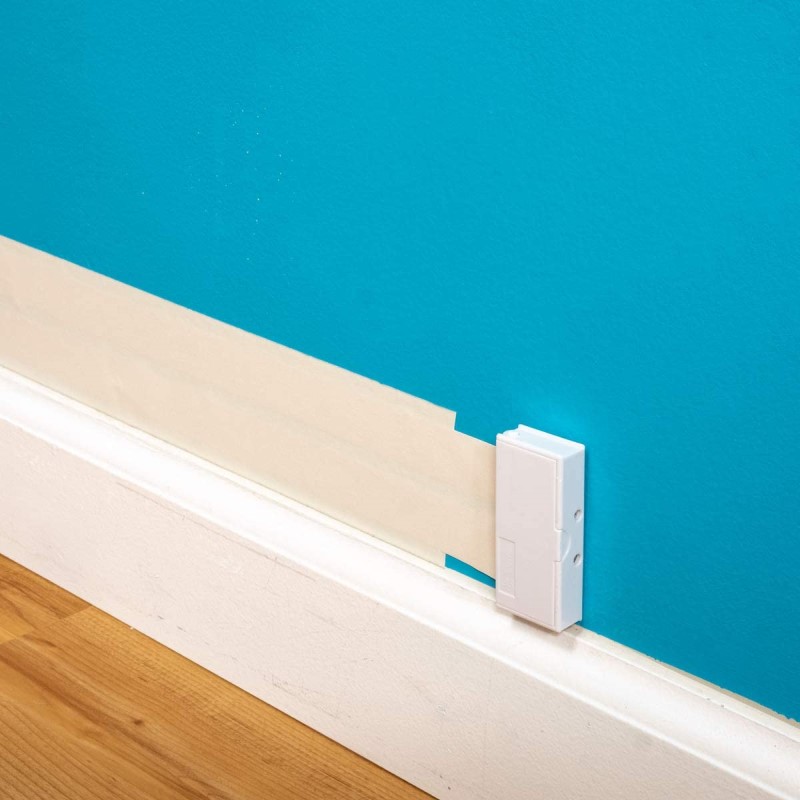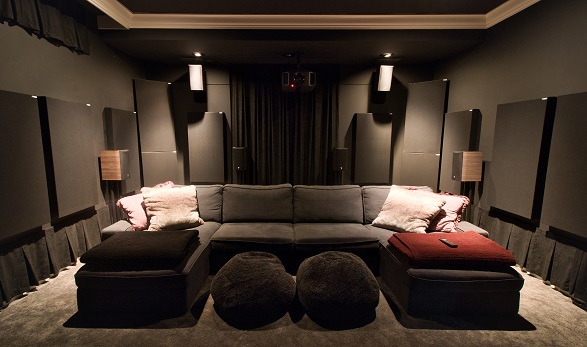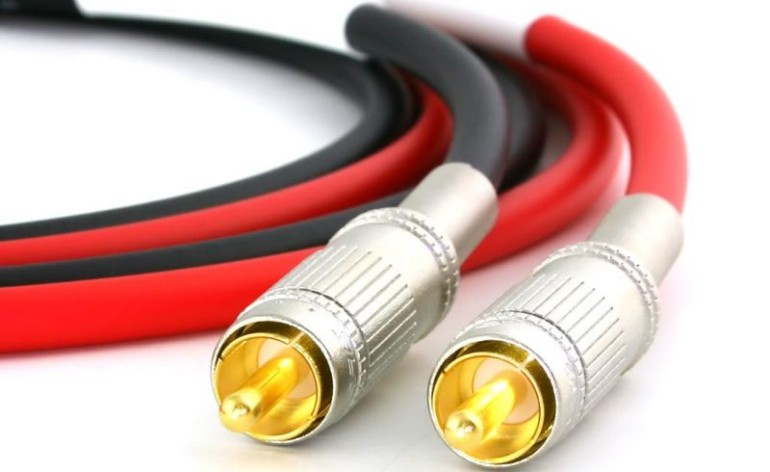7 Ways to Hide Cables in your Home Theater
When someone tells their significant other about their desire to create a home theater, they are usually met with two comments: “There aren’t going to be big, ugly speakers everywhere are they?” or “There aren’t going to be wires everywhere, right?” Hiding home theater cables is a concern even those that love home theater express. Draping cables across the floor feels very “college.” We’re adults. We can do better.
Author’s Note: If you aren’t building a house/home theater from scratch, you’ll likely need a combination of the following techniques. Figure out which you are comfortable doing yourself, or willing to pay someone else to do, and plan accordingly. Good luck.
Hiding your Cables In the Wall
The gold-standard of hiding home theater cabling is in-wall installation. The cables are completely out of sight. All things being equal – this would be the solution we would all go with. But there are issues. You need to know, definitively, where everything in your theater will be installed. You also need to plan out where everything else in your home theater will be installed. Don’t want to hang a room treatment and put a nail through a speaker cable. That can create a buzz that can be impossible to fix without pulling and rerunning the wire.
#1) Install Wire Conduit
Conduit is your friend. Conduit is essentially tubes you run in your walls for your wires. You can install your wires in these tubes along with a string. The string is used to attach to new wires and pull them through if you need to add one. This futureproofs your home theater so that you can always run new wires. It is also the least likely option to work for most of us.
Conduit is only possible to do with your wall completely open. If you wanted to futureproof your home theater, you would have every cable installed in conduit. That way if you run into a cable that has become obsolete (HMDI cables do this with nearly every new iteration of the standard) or one that breaks, you can easily replace it.
#2) Use Fish Tape
But what if you aren’t building your house/home theater from scratch (like most of us)? Well, you are going to need either attic or crawlspace access and some fish tape. You’ll need to avoid exterior walls as either you can’t access them from above or likely hit a fire-break which limits speaker placement. If you only have crawlspace access, installing Dolby Atmos speakers will be a problem.
Once you have determined where your gear will be housed, you’ll want to fish them up/down through the wall and to their specific locations. Wallplates can give you the clean look you are going for. You’ll want to be very sure of your locations because, once the cables are in the wall, moving them can mean more time in the attic, drywall repair, and likely many words we can’t print here.
Hiding Your Cables On The Wall
If your walls are already drywalled and you don’t have access above or below your home theater, you can hide your cables on the wall. There are three main ways to do that. These solutions take at least as much expertise as installing them in the wall.
#3) Cable Management Systems

There are tons of cable management systems out there. These cable raceways are paintable, often include adhesives to attach them to the walls, and aren’t that expensive. The problem is that some of the thicker cables, like HDMI, may not fit. Even if they fit, they’ll have a hard time making the 90° turns required. But these will work fine for speaker wire.
The big downside is that they stand proud of the wall. If you run them in the corners of your room, they are fairly invisible. But, eventually, they will have to run down the face of the wall to get to a speaker. When they do, all the paint in the world isn’t going to hide them. The solution is to punch a hole in the wall at that point and fish the wire down the wall to the equipment. Your raceway will stop at that point and it may look a little weird. Is there a more attractive solution?
#4) Under Trim/Moulding
Hiding your home theater cables under existing trim or molding may be possible. You’ll need an angled molding or trim that has a gap behind it (like this). You’ll need a finishing nailer (if you are considering this option, and you don’t have one, consider hiring a professional) and you’ll need to be careful not to put the nails through the gap. The wires will be run through the gap. Like the raceway solution, when you get to the point where you have a straight shot up/down a wall to a piece of equipment, you’ll punch a hole into the wall and fish the wire down. You can install the molding all around the room so the wires can be hidden and the room looks like it was designed that way.
#5) Flat Speaker Wire

The last solution requires the fewest holes in your wall but the most drywall work. Flat speaker wire has been around for a long time and can be installed nearly invisibly. It’s not overly expensive but it does require some expertise. Putting it on the wall and painting it isn’t that hard. But matching the wall texture can be an issue. The other issue is that it is hard (impossible at this writing) to find a flat on-wall HDMI cable that will be compatible with HDMI 2.1. This solution works for speaker cables, but that’s about it.
#6) Hiding your Home Theater Cables Under the Carpet
If you spend any time on the Internet searching for how to hide home theater cables, someone will invariably suggest you hide them under your carpet. Invariably they mean either a freestanding rug (which works exactly as well as you imagine) or tucked between the carpet and the baseboard. This can work, but is very situational and has its limitations.
The big problem with tucking in your home theater wires is that there is no guarantee that there is space between the floor and the baseboard for the wires. On top of that, there is a tack strip that threatens to damage your wires. Even if there is space and your wires are far enough away from the tack strip, what about doors? Unless you are going to try to run them under the carpet (tack strip, bump in carpet), you are stuck. This can work, but as we said, it is very situational. You’d need to have a straight shot to each location that doesn’t’ cross a doorway. Also, this solution doesn’t hide the wire as it runs up the wall. We’ve seen people that run the speaker wire along the carpet, have it cross the baseboard, and then punch a hole in the wall and fish it up. Your guests probably won’t notice it, but you’ll know what you did.
#7) Budget Solution: Install a Wall Skirt

One of the suggestions we heard on the AV Rant Podcast that blew our minds was to install a curtain skirt. This is a skirt around the bottom of your wall. Sounds crazy, but it can actually look pretty good with some planning. You only need fabric that is the same color as your wall. You could use some sort of curtain rod or just use industrial velcro tape to attach it to the wall. Covering the bottom 12-18 inches is enough. Now, you can lay your wires on the ground and use the fish tape to run the wires up your wall where needed. This solution allows you to switch out wires without having to pull wire through conduit, repair drywall (all the holes are under the curtain), or replace raceways. It’s a little different, but can be very effective.
In the picture above, the owner attached a painted piece of 2×4 to the wall 18″ off the ground. He attached velcro to the board using the adhesive backing and reinforcing it with some nails. The curtain he had sewn into pleats by a professional and the velcro sewn to the top. This gave him a 2″ gap between the wall and the curtain for his wires. Overall, it looks really nice, and frankly, with the lights off, you’ll never see it.
The Final Solution: Just Give Up

Maybe all this is just too much for you? Maybe you don’t have the expertise or money to do any of the above. We get it. We’ve been there. If you can’t hide the wires, you can at least get the prettiest cables possible. While there are a lot of esoteric offerings out there, we recommend you stay with well-built, less expensive offerings. Consider offerings from SVS, Blue Jeans Cables, and Monoprice. These are all well-built cables that can look pretty nice.



Very well explained. You could also tape them under the carpet just across the room especially if the cables are short.
If you have a rug, that will work for sure. Spending more for the flat wires would help eliminate any bumps. If you are going under carpet, you still have to worry about tack strips.